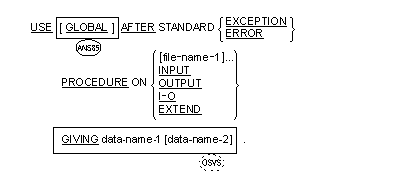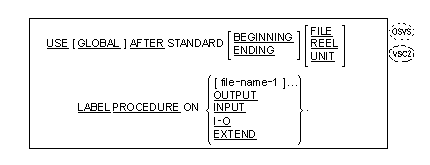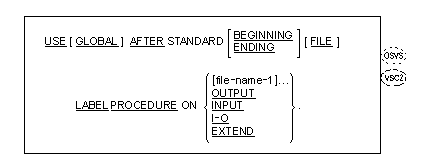
The USE statement specifies procedures for input-output error handling, that are in addition to the standard procedures provided by the input-output control system.

![]()
![]()

![]()
![]()

![]()
![]() Formats 2 and 3 are the LABEL
declarative.
Formats 2 and 3 are the LABEL
declarative.
![]() The same file-name must not appear in
more than one USE AFTER EXCEPTION statement within the same Procedure Division.
The same file-name must not appear in
more than one USE AFTER EXCEPTION statement within the same Procedure Division.
![]()
![]()
![]() This restriction can be
ignored.
This restriction can be
ignored.
| Open Mode | Action |
|---|---|
| INPUT |
|
| OUTPUT |
|
| I/O |
|
| EXTEND |
|
| Open Mode | Action |
|---|---|
| INPUT |
|
| OUTPUT |
|
| I/O |
|
| EXTEND |
|